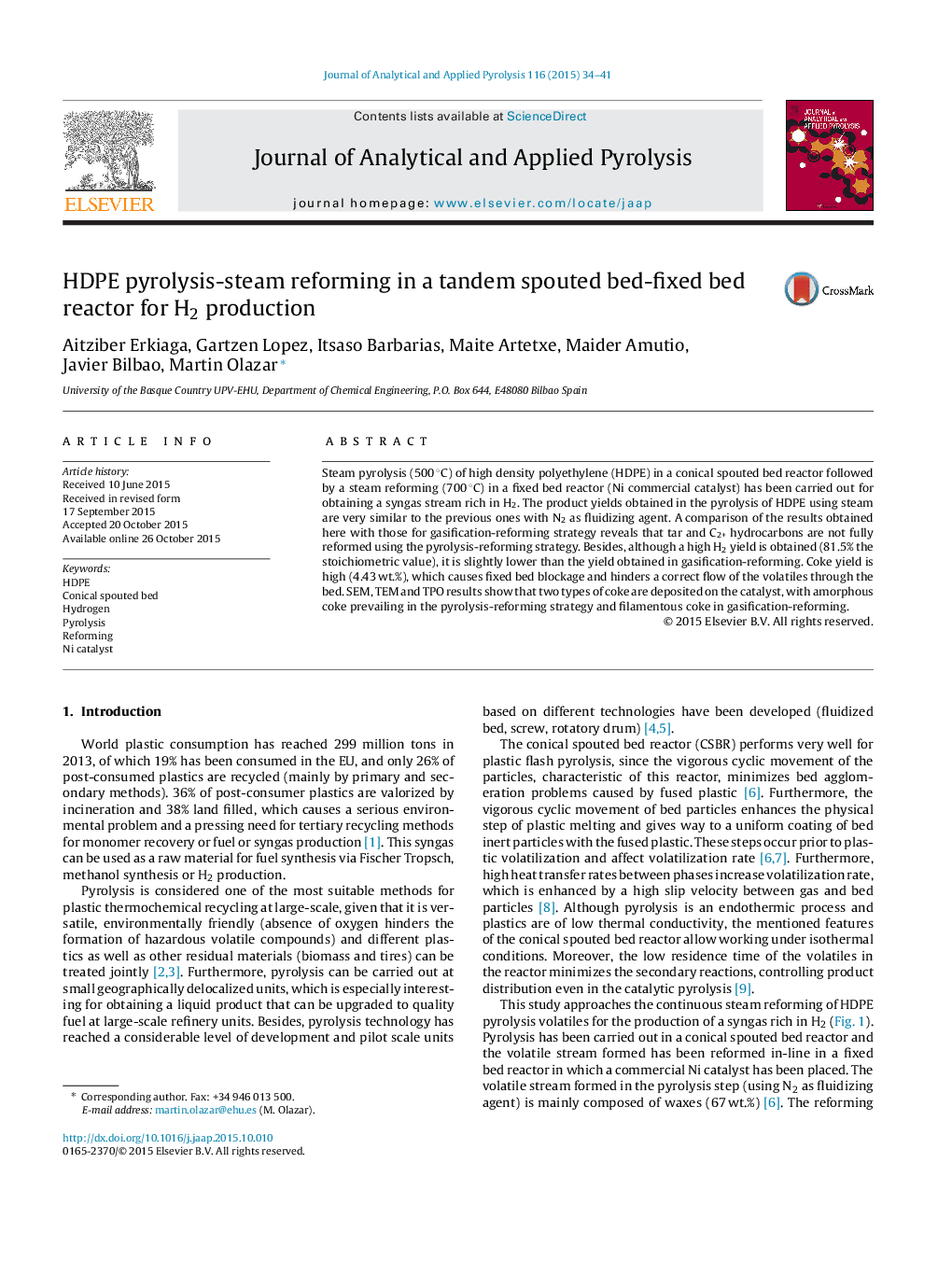| Article ID | Journal | Published Year | Pages | File Type |
|---|---|---|---|---|
| 1196999 | Journal of Analytical and Applied Pyrolysis | 2015 | 8 Pages |
•Replacing N2 with steam does not change pyrolysis volatile stream composition.•Pyrolysis-reforming system performs well for obtaining syngas rich in H2.•High H2 yield is obtained (81.5% of the stoichiometric value) at 700 °C.•Higher byproduct yields in pyrolysis-reforming than in gasification-reforming.•High coke yields, 3.3% (gasification-reforming) and 4.4% (pyrolysis-reforming).
Steam pyrolysis (500 °C) of high density polyethylene (HDPE) in a conical spouted bed reactor followed by a steam reforming (700 °C) in a fixed bed reactor (Ni commercial catalyst) has been carried out for obtaining a syngas stream rich in H2. The product yields obtained in the pyrolysis of HDPE using steam are very similar to the previous ones with N2 as fluidizing agent. A comparison of the results obtained here with those for gasification-reforming strategy reveals that tar and C2+ hydrocarbons are not fully reformed using the pyrolysis-reforming strategy. Besides, although a high H2 yield is obtained (81.5% the stoichiometric value), it is slightly lower than the yield obtained in gasification-reforming. Coke yield is high (4.43 wt.%), which causes fixed bed blockage and hinders a correct flow of the volatiles through the bed. SEM, TEM and TPO results show that two types of coke are deposited on the catalyst, with amorphous coke prevailing in the pyrolysis-reforming strategy and filamentous coke in gasification-reforming.
